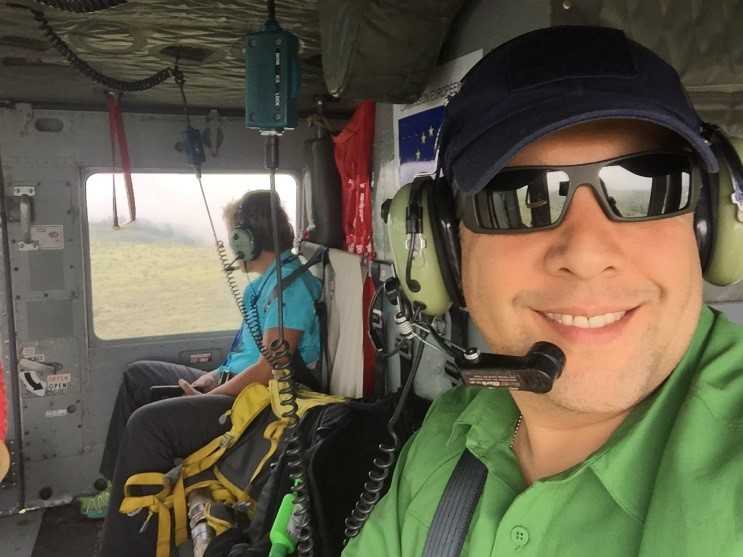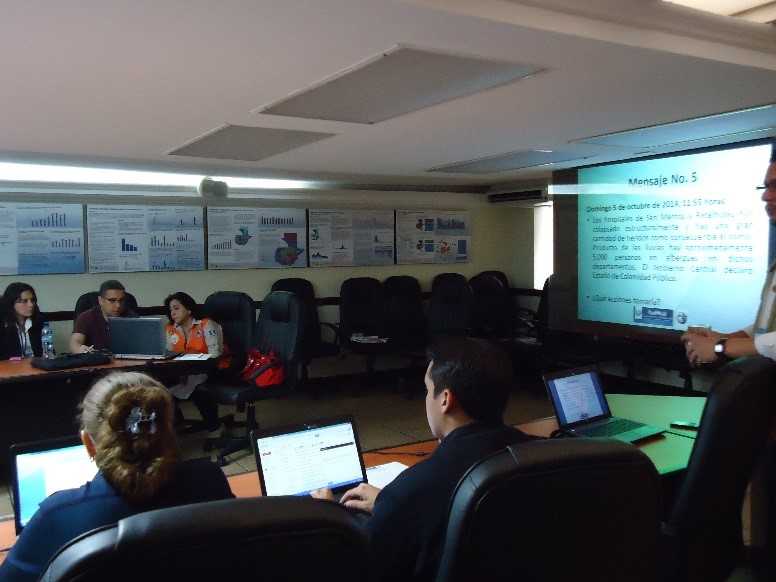Global Disease Detection Stories: Getting Resourceful in Guatemala – How to Build an EOC on a Shoestring
Having Emergency Operations Centers (EOCs) that can respond within two hours is one of the goals of the Global Health Security Agenda. But do EOCs always need to come with a high price tag? Not according to Luis Hernandez, who is on the road 200 days per year setting up EOCs in all corners of the world.
When most people picture an emergency operations center (EOC), they imagine something like the space at the Centers for Disease Control and Prevention (CDC) headquarters in Atlanta. Established in 2003, the Atlanta EOC features state-of-the-art technology, including a wall of screens that provide a constant stream of news reports, maps, presentations, statistics, and situation updates. It is staffed 24 hours a day by professional responders. When activated, the EOC can accommodate up to 230 personnel per 8-hour shift to handle emergency situations anywhere in the world. Access to the best technology and dedicated staff enables CDC headquarters to do more, do it faster, and help more people than ever before.

Lara Rook of Public Health Canada Agency and Luis Hernandez helicopter to Faranah, Guinea to provide training in Emergency Management and EOC Management, May 2015.
But it wasn’t always this way. During the terrorist attacks of 2001, CDC headquarters for response activities consisted of conference rooms with limited equipment. Luis Hernandez, who handles emergency preparedness and response for CDC in Central America, knows that mounting an effective response is about more than having the latest technology and equipment. Luis helps countries without a huge budget or a lot of staff create EOCs, and has set up successful centers in Guatemala, Panama, Dominican Republic, Belize, Honduras, El Salvador, Colombia, Bangladesh, Kenya, Thailand, Guinea, and two in India (New Delhi and Assam).
Here is what he’s learned about how to build an EOC on a shoestring.
Find an empty room
Any empty room will do. Luis usually finds an unused conference room. “You don’t need a multi-million dollar EOC to respond to an emergency,” he says. “Having an EOC reduces the time, money and effort needed to respond. Everyone in Central America thought four or five years ago when we started this process that we would be replicating headquarters. We’re just looking for a conference room!”
Get a few computers… and some other stuff
Making existing resources work is at the core of building a functioning EOC. In the room in Guatemala sit 12 laptops, a projector, and a screen. “I had to borrow a conference table from the influenza program,” Luis says, laughing. “I need a network and I need power. I have three flat-screens -- also borrowed. We’ve invested in computers with GIS capability. We have an old plotter I fixed up to print maps for the Ministry of Health.” The team communicates over satellite phones – all recycled.
Train people well
“If you don’t have the right people with the right training, a multi-million dollar facility is no use.”
By far, the most important resource in an EOC is people. “If you don’t have the right people with the right training, a multi-million dollar facility is no use. If you have the right people, with their laptops they can do their jobs.” When budgets don’t allow for dedicated staff, as in Guatemala, Luis recommends training staff who can shift focus from their day jobs and become emergency responders at a moment’s notice. The Guatemala EOC has seven highly trained staff members from the Ministry of Health on call.
Connect with neighbors
Connecting throughout the region is critical. “Central America is unique in that everyone is close,” says Luis. In 2012, partners founded a regional emergency management technical committee for Central America. This allowed for better communication between countries, helping them keep track of health events in the region and share best practices. Today, the region is collecting and sharing information about the emerging Zika virus, enabling countries to see how others are preparing to handle the virus and getting everyone on the same page.
Do amazing work

Guatemala Ministry of Health EOC Earthquake Tabletop Exercise (March 2014)
The Guatemala EOC was last activated during the 2014 Ebola outbreak to conduct preparedness activities and coordinate all of Central and South America’s requests. They were instrumental in creating many of CDC’s Spanish-language materials about Ebola, and supported critical training on Ebola detection, infection control, and sample management.
The EOC has also been activated for every tropical storm in Guatemala. In 2012, after tropical storm 12-E, Luis flew over the area with USAID and OFDA and noticed an urgent need for water purification systems. The EOC now has a system in its warehouse that can provide water anywhere in Guatemala.
From linking resources when dengue came into the region, to helping regional governments develop emergency action plans, to setting up a mobile EOC that can operate via satellite anywhere in the region, Luis’s work in Guatemala demonstrates the power of a low-tech, low-cost EOC. As Luis says, getting started on building an EOC can be simple: “You need a little money, some dedication, good training, and to get the right people talking to each other.”
Work in building EOCs is supported by countries’ ministries of health and U.S. and international partners. The work described in this story is coordinated through the GDD Regional Center for Guatemala and Central America, which is part of CDC’s regional office.
- Page last reviewed: December 8, 2015
- Page last updated: December 8, 2015
- Content source:


 ShareCompartir
ShareCompartir